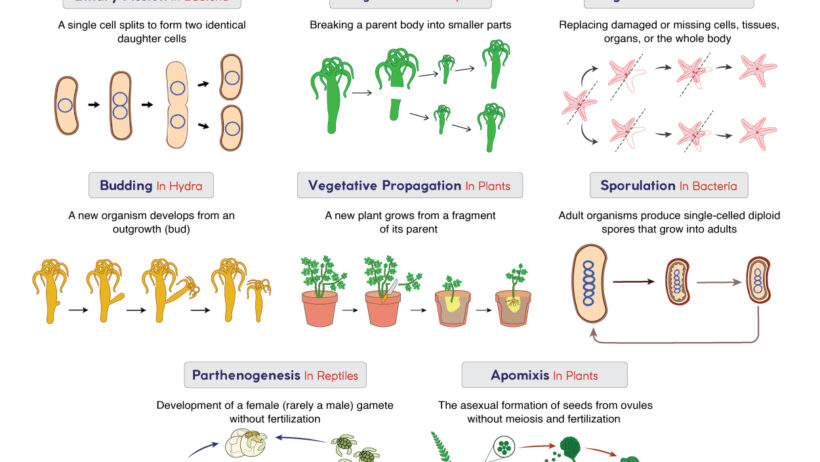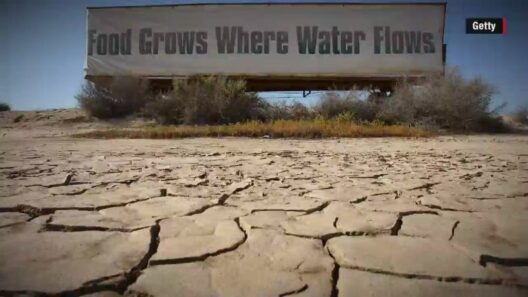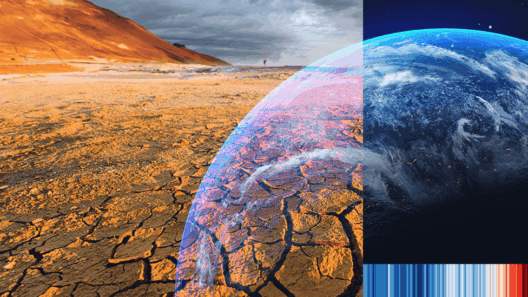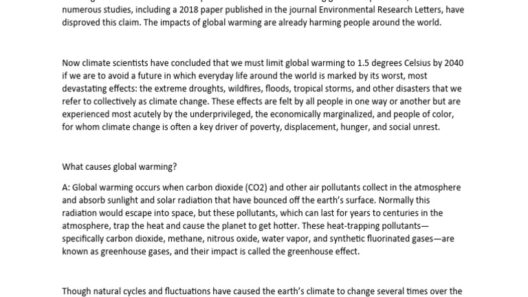The concept of survival in a rapidly changing environment is more critical than ever. As global warming continues to escalate, the repercussions for biodiversity and ecosystems are profound. One of the most fascinating biological strategies that organisms employ to thrive amidst environmental challenges is asexual reproduction. But how does this mode of reproduction confer advantages in a warming world? Is it possible that species relying primarily on asexual reproduction could become the champions of survival? This article delves into the intricacies of asexual reproduction, exploring how it ensures continuity and resilience for many organisms while questioning its potential limitations in an uncertain future.
Asexual Reproduction: An Overview
Asexual reproduction is a mode of reproduction that does not involve the fusion of gametes. It enables organisms to produce offspring that are genetically identical to the parent, often referred to as clones. This process can take various forms, such as binary fission, budding, fragmentation, and vegetative propagation. For many microorganisms, plants, and certain animals, asexual reproduction provides a rapid and efficient means to increase population sizes without the energetic costs associated with sexual reproduction.
In a world threatened by climate change, the advantages of asexual reproduction are compelling. It allows for swift colonization of available habitats, paramount in environments that are dwindling due to rising temperatures or habitat destruction. Furthermore, the notion of “genetic consistency” fosters stability within a population. Clones display successful traits of their progenitor, showcasing resilience against specific environmental pressures.
Ecological Implications of Asexual Reproduction
The ecological consequences of asexual reproduction extend beyond mere population dynamics. In environments where conditions fluctuate unpredictably, organisms that reproduce asexually can exhibit rapid adaptability. The ability to proliferate in numbers can also enhance genetic dilution, a form of internal competition that allows for some species to exploit available resources more efficiently than their sexually reproducing counterparts. However, this replication can lead to challenges when environmental adaptability is required.
While the immediate benefits are clear, the drawbacks of asexual reproduction become evident when considering genetic variability. A lack of genetic diversity can hinder a population’s ability to adapt to changing conditions. Consider the age-old question: can true resilience exist without variation? If a population is genetically uniform, it may be particularly susceptible to epidemics or shifting climate conditions, which could wipe out entire colonies.
Asexual Reproduction in Action: Case Studies
Several case studies demonstrate how asexual reproduction serves as a lifeline for various species. For example, certain species of starfish possess the remarkable ability to regenerate lost arms, effectively allowing them to reproduce asexually through fragmentation. This reproductive strategy enables them to thrive even in disturbed marine environments. Similarly, plants such as the quaking aspen expand their territory through horizontal growth, forming expansive groves from genetically identical offshoots. Such behaviors enable them to sustain themselves in ecosystems that are undergoing substantial disruptions.
In more extreme cases, organisms like the hydra possess a unique method of budding—an asexual reproduction technique that not only allows for rapid population growth but also imparts a level of efficiency in nutrient utilization within their aquatic ecosystems. However, this reproductive strategy ultimately raises questions about sustainability: what happens to these organisms when their local environments become inhospitable? Will their clones withstand rising temperatures or toxic runoff?
The Dual Edge of Climate Change
Global warming presents a dual-edged sword to those species reliant on asexual reproduction. While the rapid reproduction and colonization abilities can offer immediate survival advantages, the overarching threat of climate instability introduces risks previously unattained in evolutionary history. The question arises: can a population, thriving in stability due to asexual means, survive the unpredictable chaos wrought by climate change?
For instance, in coral reefs, asexual reproduction contributes to the resilience of certain species. Stony corals can reproduce asexually through budding, allowing them to recover from disturbances. Yet, as ocean temperatures rise and acidification occurs, can these clones withstand the very conditions that lead to their environmental degradation? The balance between propagation and vulnerability becomes eerily evident.
Future Considerations and Challenges
As scientists delve deeper into the complexities of asexual reproduction and its implications in a warming world, the focus shifts toward understanding how genetic manipulation and biotechnological advancements could either mitigate or exacerbate these challenges. Could scientists develop methods to induce genetic diversity in populations primarily reliant on asexual reproduction? Or will the climate’s rapid alterations outpace such endeavors?
Moreover, ethical considerations underpinning biotechnological interventions must be weighed against potential ecological benefits. Is it moral to alter a species’ reproductive strategy? Every intervention carries implications for the surrounding ecosystem, warranting a cautious approach in our attempts to guide species toward greater resilience.
Conclusion
The intricate tapestry of life woven by natural processes faces daunting challenges amidst global warming. Asexual reproduction offers intriguing insights into survival strategies worthy of exploration. As we confront ecological crises, understanding this reproductive strategy may shed light on the broader concept of resilience in nature. The ultimate question remains—can the clones that thrive today adapt to the mercurial climate of tomorrow? Only time will tell, but exploration and understanding are vital as humanity strives to navigate the complexities of environmental change.







